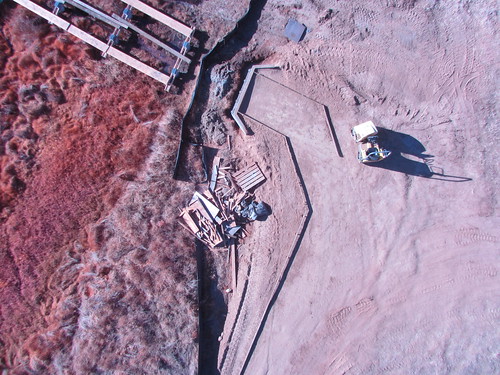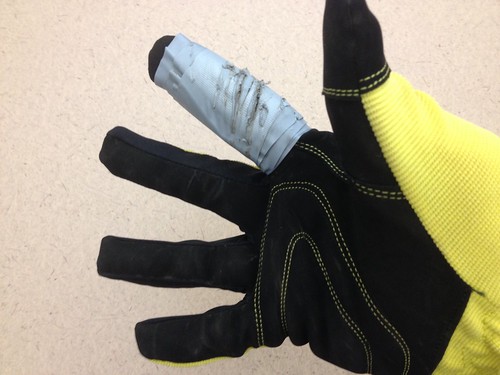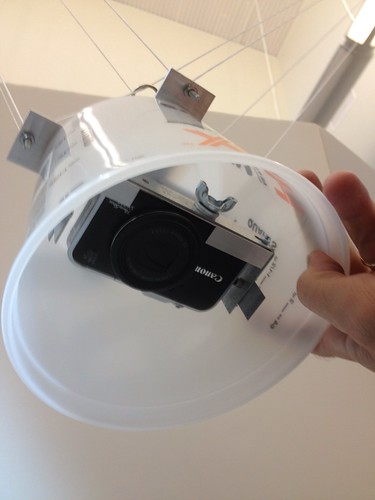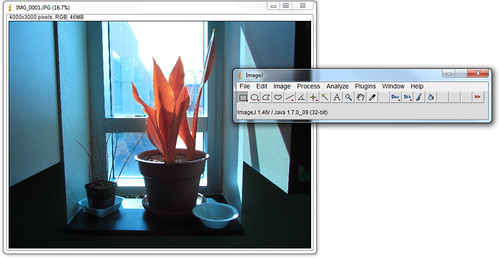Flew the 9′ delta this afternoon in the wetlands below the college, and sent the NIR camera up for the first time, resulting in photos that look something like this:
1. Flying solo is more difficult than flying with a partner. I had to find a stable elevation for the kite, step on the line, and rig the picavet with one hand. A few times when the camera was dangerously close to the ground, it would have been nice to have a partner to keep it safe from harm.
2. Given the way that that camera sits inside the bucket, it’s a little difficult to operate it. I’m going to noodle on a solution…
3. Always bring a broad-brimmed hat and/or sunglasses. I had neither.
4. Always always wear gloves. I burned through about eight wraps of duct tape in this one flying session. I like the overall weight of the glove pictured below, I just need to find a way to add a heavy duty sleeve to that finger.
5. A 1 minute interval is too long. I’m thinking that 30 seconds will give more overlap, which will enable better knitting.




